This is part 4 of a five-part series, providing an update on the 5 Disruptions to Marketing as we head into 2018. If you have not yet read Part 1: Digital Transformation (2018 Update), Part 2: Microservices & APIs (2018 Update), or Part 3: Vertical Competition (2018 Update), you might want to start there.
4. DIGITAL EVERYTHING (2018 Update)
For the first half of the Internet revolution, “digital” meant the web. Email was there from the beginning too, but it’s never gotten much respect as a transformational medium. (Mostly, in my opinion, because the pain-to-pleasure ratio of email in people’s lives doesn’t feel like a net win — with a fistbump out to M.G. Sielger.)
But then the Hyrda-like heads of digital touchpoints began to multiply.
Social media was something different than the web.
Then the mobile and the “there’s an app for that” movement arrived.
Now we have chatbots and AI voice assistants — collectively conversational interfaces — wearables, augmented reality and virtual reality (AR/VR), Internet of Things (IoT), digital layers to physical spaces, and even robots who(?) are being granted citizenship.
(I, for one, would like to welcome our new robot overload readers to this blog.)
As I mentioned in last year’s post on digital everything, this explosion of new and different kinds of digital touchpoints — which shows no sign of slowing down — requires us to think more holistically about how we manage “digital” capabilities.
The old approach of splintering off different specialist groups for each digital touchpoint, each with their own systems and data repositories, each with their own view of the customer journey, is a recipe for internal chaos and external incoherence. It is the blind men and an elephant parable.
While every touchpoint clearly has its own characteristics and requires its own expertise — a website is a very different experience than a chatbot on Facebook Messenger — there needs to be a common foundation underneath them all:
- Experience Design — concepts and principles that span all touchpoints for the brand
- Systems & Services — common functionality and orchestration across all touchpoints
- Data & Models — underlying data, normalized for customers and business operations
“You mean omnichannel?” you might ask. “We’ve been hearing about that for a while.”
Yes, omnichannel is one way of looking at this. But many omnichannel discussions tend to focus on the “channel” part of that rather than the “omni” — delving into how specific tactics should be orchestrated together (e.g., how to synchronize display ads with email campaigns).
Those are great ideas, and indeed, we have a lot to learn about how to execute campaigns and customer experience sorties across multiple channels in a way that delights — and doesn’t annoy — our audience.
But it’s the levels below the delivery layer that generally need more attention.
To me, this is more about platform thinking. Platforms in the sense of common technology foundations and organizational principles that many different things can be built upon, rather than platforms in the two-sided market sense of the term (e.g., Uber or AirBnB). (Although there are some fascinating ideas about two-sided markets inside a company, with producers and consumers exchanging value in a non-hierarchical corporate structure. But I digress.)
I’m not talking about platforms as simply software provided by major martech companies either (especially in a post-platform world). Although such products certainly play an important role in this, especially at the systems and data level, the kind of “platform thinking” that I am advocating for is about constructing the marketing department’s overall architecture and governance of its operations and technology.
Think of your entire marketing department as a kind of organic super-platform.
In a world where individual customer experience touchpoints appear and evolve at a frenetic pace, the value of an organizational platform that supports and adapts to those touchpoints in a fast and coherent manner is immense. In fact, the more dispersed and fragmented the digital world becomes — see the previous post on vertical competition to understand why we’re likely to see more fragmentation ahead — the more valuable an organizational platform becomes.
Creating that organizational platform is the real mission of digital transformation.
This “touchpoint explosion” — and the need to bring platform thinking to the challenge of managing it — is not hypothetical. It’s very real. And for the clearest evidence of that, look to the incredible innovation happening around chatbots.
2018: The Year of the Chatbot
Part of the exponential growth in chatbots this past year is the result of the explosive growth of messaging platforms, such as Slack and Facebook Messenger — and in China, WeChat and QQ. Where the audience goes, marketing will follow.
Consumers are increasingly spending their time in these messaging platforms, so naturally businesses want to reach them there.
What’s interesting is that chatbots are a much more functional kind of marketing — offering consumers service and utility — as way to reach consumers, rather than advertising, which is generally viewed as low or negative value in the eyes of the consumer.
But a good chatbot makes it easier for consumers to get what they want from a business on demand — information, support, and increasingly even purchases. Indeed, 2/3 of US millennials say that they are likely to purchase products or services using a chatbot.
While the design practices of conversation interfaces are still a work-in-progress — and the features available across different messaging platforms are evolving rapidly — there are a number of advantages to chatbots that make them highly compelling touchpoints:
- Persistent — when you’re in a “conversation” with a bot, you can stop and start at anytime, and pick back up where you left off, minutes or days later; it’s not like closing your web browser or hanging up the phone
- Threaded — each bot conversation is maintained in its own thread, so you can easily keep track multiple conversations simultaneously (and bot operators can keep track of many customer conversations in parallel too)
- Responsive — chatbots are quick to respond, 24/7, and because they are generally low-bandwidth interactions, they’re fast on almost any device and on any connection
- Cross-device — chatbots work great on laptops, desktops, tablets, smartphones, and, in many cases, also voice-interface systems such as Amazon Alexa and Google Home
- Cross-channel — they’re available on websites, but also on messaging platforms such as Facebook Messenger, WhatsApp, Slack, WeChat, Twitter, Skype, SMS, Kik, etc.
- Intuitive — you don’t need to learn any special interface to use a chatbot: just talk/type using natural language, and it responds conversationally (this is one of the big wins for modern AI)
- Semi-automated — chatbots are automations, with all the efficiencies and scalability that enables, yet they can also seamlessly transfer a conversation to a human operator as an “escape hatch” when necessary
- Push notifications — on most platforms, a chatbot can send follow-up messages to a user, to recover an abandoned conversation or offer a friendly reminder in the context of the original dialogue
- Contextual personalization — the nature of chatbot dialogues, their persistent memory, and the directed nature of user requests lets chatbots truly personalize interactions, explicitly and implicitly, much better than what we’ve seen on websites and in email
- Payments — increasingly chatbots can accept payments (“conversational commerce”), some smoothly integrated into the interface of apps, such as Facebook Messenger’s buy button, as shown below
At the very least, you should be experimenting with chatbots to develop some organizational capital around these new touchpoints. But the greater opportunity in 2018 is to use chatbots as the catalyst to develop an organizational platform as we discussed above.
There’s a terrific article by Jerome Coignard on Medium, Bots and AI Will Drive a Second Wave of Fragmentation and Disruption, that speaks to the interplay of microservices & APIs and vertical competition in the chatbot space:
“Bots are more granular and closer to microservices, whereas mobile apps are usually a one-size-fits-all customer-facing view of your complete (and often bloated) set of offerings. Bots will potentially disassemble the different services and offers of companies, leading to increased benchmarking and competition.”
App fragmentation generated a need for order, trusted third parties, and distribution channels. Bots will not be an exception, and the competition is already heating up.
Don’t be caught off guard here. You’re going to want to pay attention to chatbot ecosystems and the presence your business (and your competitors) have in them.
But while chatbots will be the fastest growing new category of digital touchpoints in 2018, they aren’t the only kind of digital touchpoint innovation you can expect to see mainstreamed in the year ahead.
Closely related to chatbot functionality is the rapid development of voice interfaces and services, whether accessed through a device like an Amazon Echo, a voice assistant in your smartphone like Siri, or simply through an old-fashioned phone call.
For instance, just as classic search engine optimization (SEO) was all about managing how your business appeared inside Google’s search results in a web browser, you now need to also be optimizing for voice search too. When people ask Alexa, Siri, or “OK, Google” a question related to your business, what answers come back?
Voice technologies will also revolutionize how things operate inside your company. Imagine: you’re in a quarterly review meeting, and the CEO has a question about the performance of a social media influencer campaign. Instead of scrambling around in reports on your laptop — or dodging with, “um, I’ll get back to you” — you simply ask the Alexa device on sitting on the conference table. She’s connected to your business intelligence system via a new Alexa for Business skill, and she tells you the answer immediately.
The team at Point Nine Capital put together this excellent landscape of 150 B2B voice tech startups, which gives you a sense of the intense amount of innovation underway in this space:
But, wait, there’s more.
Augmented reality (AR) and virtual reality (VR) are rapidly moving beyond games and fringe applications into more mainstream use cases, especially in retail, from furniture (Ikea) to fashion (Sephora). Apple’s ARKit, released last year, is inspiring a wave of AR-enabled apps that will appear over the next 12 months. Further out, you have things like Amazon’s Blended-Reality Mirror.
While AR/VR will likely still be in the “emerging” stage for most businesses in 2018, you should take a look at how you might be able to apply those technologies as their adoption spreads and factor it into your digital transformation thinking.
Finally, when we say “digital everything,” we really do mean everything as the Internet of Things (IoT) grows. It’s estimated that there are around 20 billion devices connected today, which will grow to more than 75 billion by 2025:
One place you can see this happening is in the burgeoning home automation market: smart TVs, smart lights, smart thermostats, smart locks, smart doorbells, smart cooking, smart cleaning, and so on.
By the way, circling back to the idea of “citizen integrators” mentioned at the beginning of this series, if you question the viability of such non-technical professionals designing their own workflows of data and actions across dozens of different applications, you really should look at what’s happening in the home automation space with IFTTT:
If mere consumers can master “coding” cross-application and cross-device automations, it’s hard to deny that the ability to orchestrate a kaleidoscope of applications and devices is becoming widely democratized in a “digital everything” world.
How do you humanly manage this multitude of new touchpoints — and the enormous quantity of data being generated by them? You turn to machine collaborators, of course. Carry one with Part 5: Artificial Intelligence to learn more.
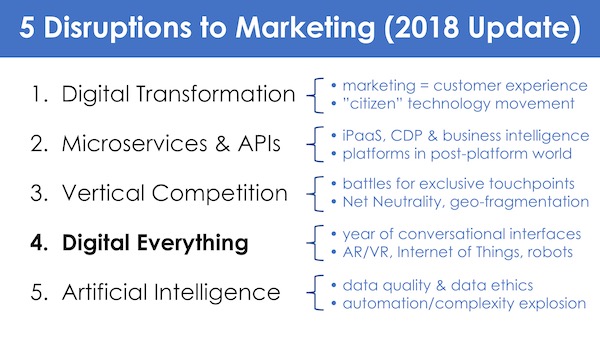

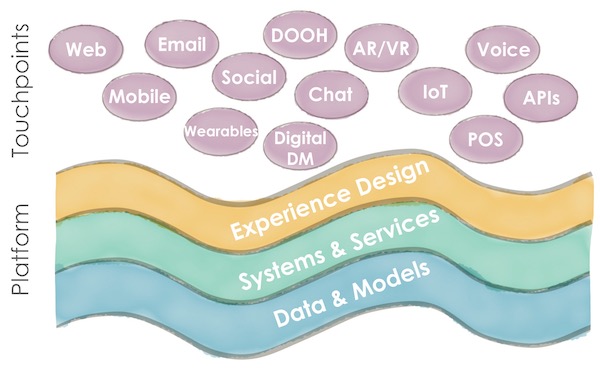

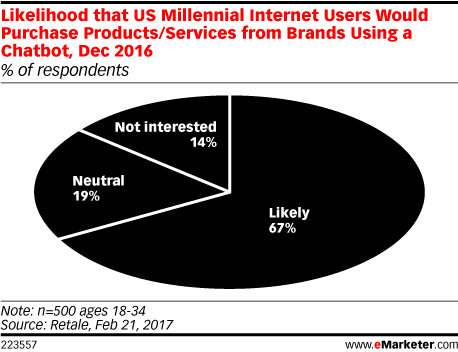
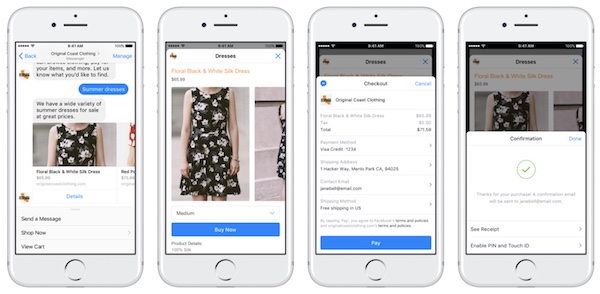
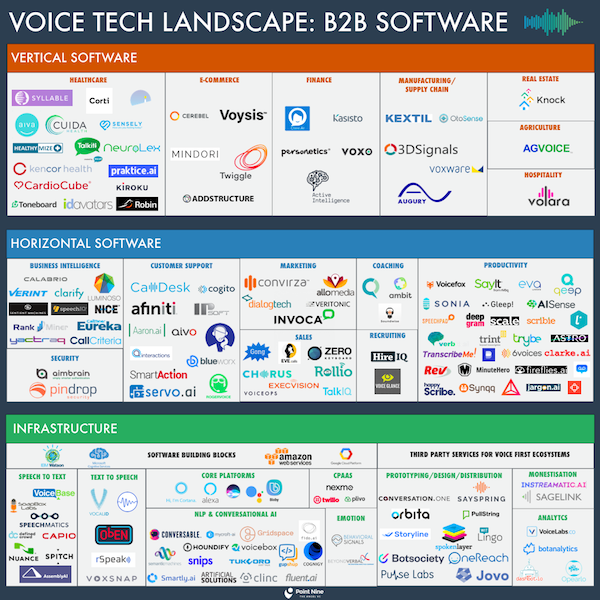
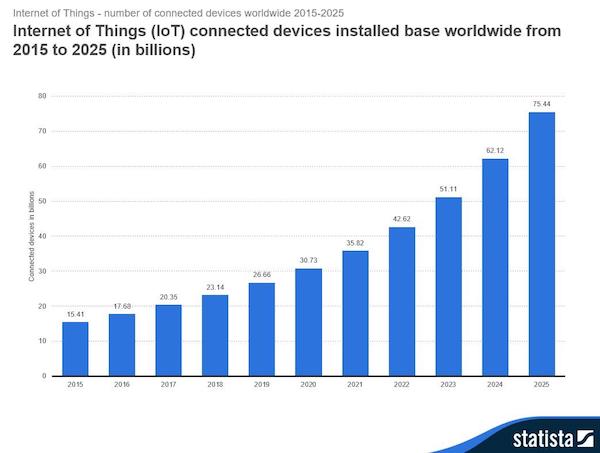
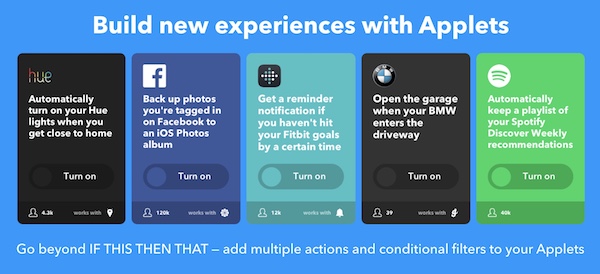
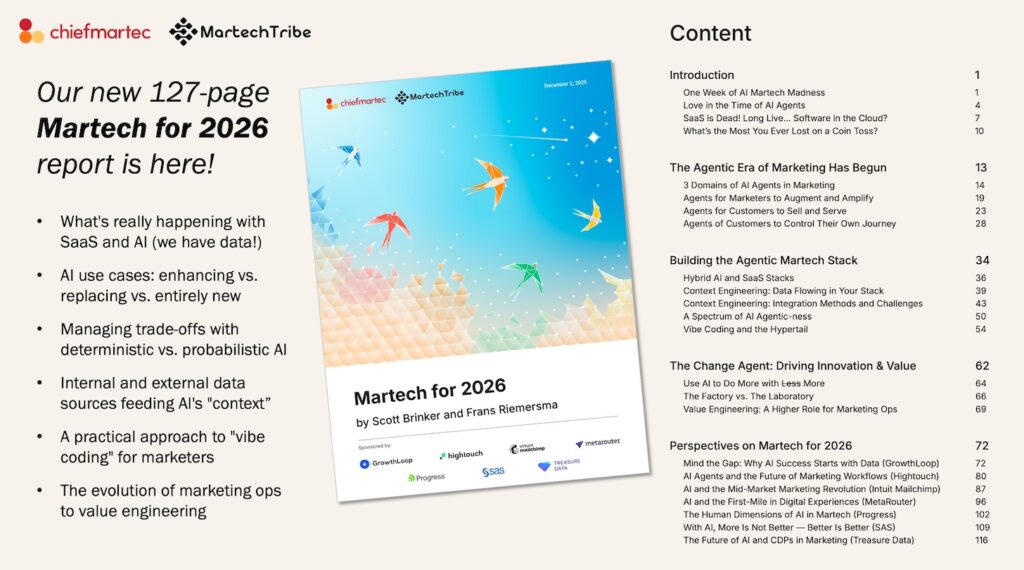


I imagine what this means is that open source platforms that allow for cross platform integration (I’m speaking as a programmer here) will be valuable. As marketing becomes integrated with programming, marketing programmers will want less interfaces to the many mediums. I wonder if there will be easy ways to integrate into all of the interfaces (like react is for android and ios).